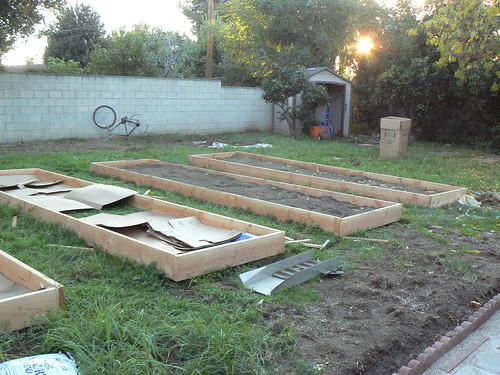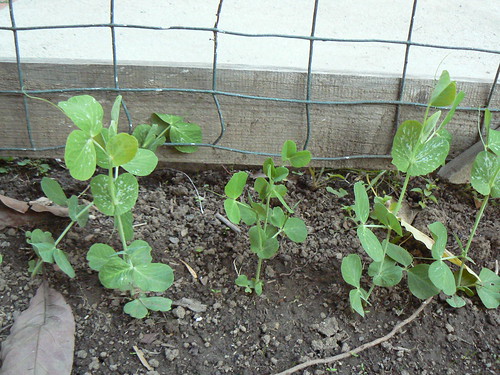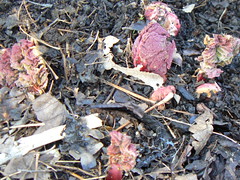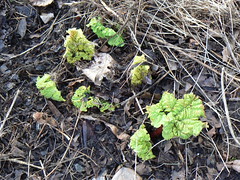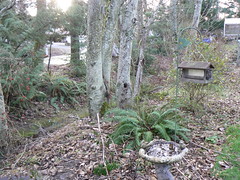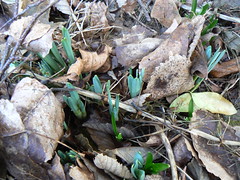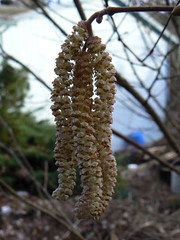No, I'm not dead, though moving has been the death of my blogging, at least for awhile. Last April I moved from Portland to Southern California, trading rain, mud, and slugs for sunshine, scorched earth, and more slugs, plus some snails to keep them company (and black widows, cockroaches the size of carthorses, June bugs, and who knows what else that I haven't discovered yet). Despite my many multilegged adversaries, I
love the sun and warmth down here.
We were lucky to find a house with a larger than average yard, so I have room for some new gardening adventures. The yard is mostly a blank slate, lots of weedy grass with a few trees and shrubs, including 5 (!) citrus trees (yay!). Here are a few pics:
Blank slate backyard:

Northwest corner of the backyard.
The tree on the right is either an orange or a tangerine (or some other citrus-y object that resembles an orange).

Now I just have to learn how to garden in this alien environment. Though I'm a native Californian, I grew up in Northern California, where it's a bit cooler, at least in the winter. And, I was a typical kid, much more interested in music, guys, cars, guys, friends, guys, sleeping late, and guys, than I was in learning how to grow stuff. Gardening was something old people like my mom and grandpa droned on about for hours while I watched MTV. Needless to say, I didn't learn much about California gardening, so I'm starting over as a novice. After 14 years in cool, wet Portland, I feel like I'm gardening on another planet. Here are a few of my observations as a stranger in a strange (but wonderfully warm and sunny) land:
- Citrus trees grow in the ground here, as God intended. No more hauling potted lemon trees into the greenhouse in September and trying to keep them alive through a Portland winter.
- Bougainvillea, an exotic tropical that I tried (and failed) to grow in my greenhouse in Portland, is a huge, mutant, thorny thing down here. If you turn your back on it for 5 minutes, it will eat your house.
- Summer is the dead season for gardening in SoCal, as it's too hot to do much (besides watering... all the time), and new plantings are likely to shrivel in the heat. Now, though, is prime planting time, especially for cool-season stuff like lettuce and onions that I would have planted in March back in Portland.
- And speaking of climate differences, I still can't get used to how warm it is here. Granted, this has been a weird weather year all over, but we had a 100-degree day in early November! Huh? My poor lettuce was so confused.
- You'd think that with the hot, dry climate, people would mulch down here. But you would be wrong. Even in professionally-tended landscapes, I see bare dirt in the planting beds. Not me. I'm going to pile a few inches of fall leaves (assuming the leaves actually fall... they haven't yet) on everything, so I don't have to water every 10 minutes next summer.
Farewell for now, and to all of you readers with gardens covered in snow and ice or swampy with rain... It was sunny and 70 here today. Neener, neener, neener!
